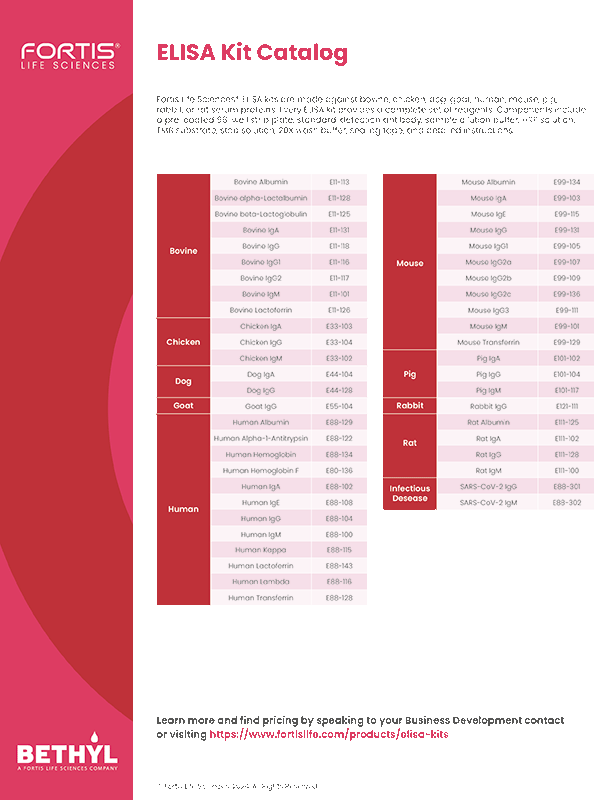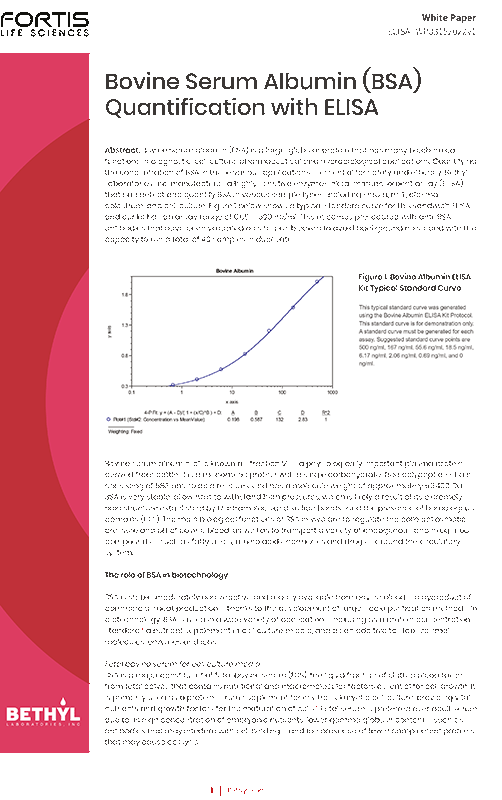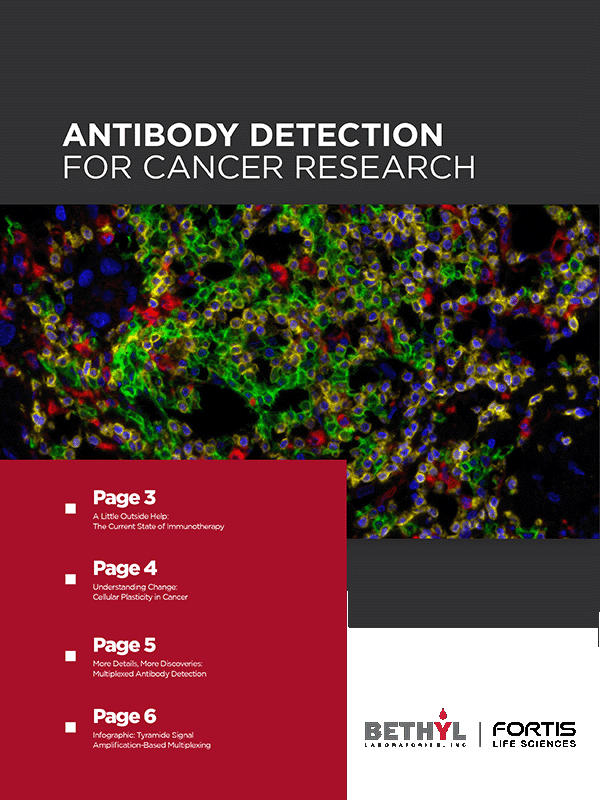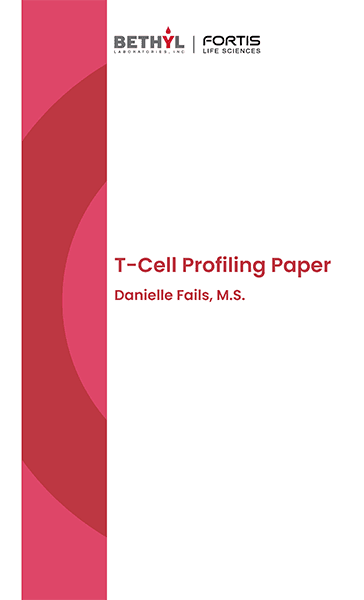Catalogs from Bethyl Laboratories/FORTIS Life Sciences
ELISA Kits Catalog
Fortis Life Sciences® ELISA kits are made against bovine, chicken, dog, goat, human, mouse, pig, rabbit, or rat serum proteins. Every ELISA kit provides a complete set of reagents. Components include a pre-coated 96-well strip plate, standard, detection antibody, sample dilution buffer, HRP solution, TMB substrate, stop solution, 20X wash buffer, sealing tape, and detailed instructions. Released 2024.
Bovine Serum Albumin (BSA) Quantification with ELISA - White Paper
Bovine serum albumin (BSA) is a large, globular protein that has many biochemical functions in diagnostic, cell culture, pharmaceutical and microbiological applications. Quantifying the concentration of BSA in various applications is essential from a safety and efficacy perspective. This White Paper about ELISA-based quantification of BSA gives you a snapshot of Bethyl’s BSA ELISA kit (E11-113), which can quantify BSA in various sample types, including serum, milk, plasma, colostrum, and cell culture medium. Released April 2022.
Antibody Detection for Cancer Research
Researchers use antibody-based labeling techniques to find and track proteins in cell and tissue samples. Historically, technological limitations restricted scientists to probing only a single protein per experimental run, which was adequate as long as cells could be distinguished using one or two markers. However, as researchers discover more tumor-specific cellular subtypes, the number of markers needed to characterize and distinguish them increases. Antibody multiplexing techniques allow scientists to simultaneously detect and examine multiple protein markers. The increased single-assay detection capacity offered by antibody multiplexing is paramount for the effective and comprehensive characterization of heterogeneous cell populations such as tumors. Released 2021.
T-Cell Overview
The immune system heavily regulates disease development, progression, and recurrence. As such, the need for reliable predictors is high. These markers are used to assess the best course of treatment, help assess survivability, and provide insight into a possible recurrence. Interest in immune profiling and the tumor immune microenvironment (TIME) has increased, and new tools and techniques have arisen as a result. It is important in most cases to use assays appropriate to the situation and recognize that a combination is often necessary for a comprehensive analysis of the disease state. This paper discusses the benefits of analyzing the TIME in a multiplex immunofluorescence setting using some key T-cell markers and what information researchers can glean utilizing this technique. Released 2021.





